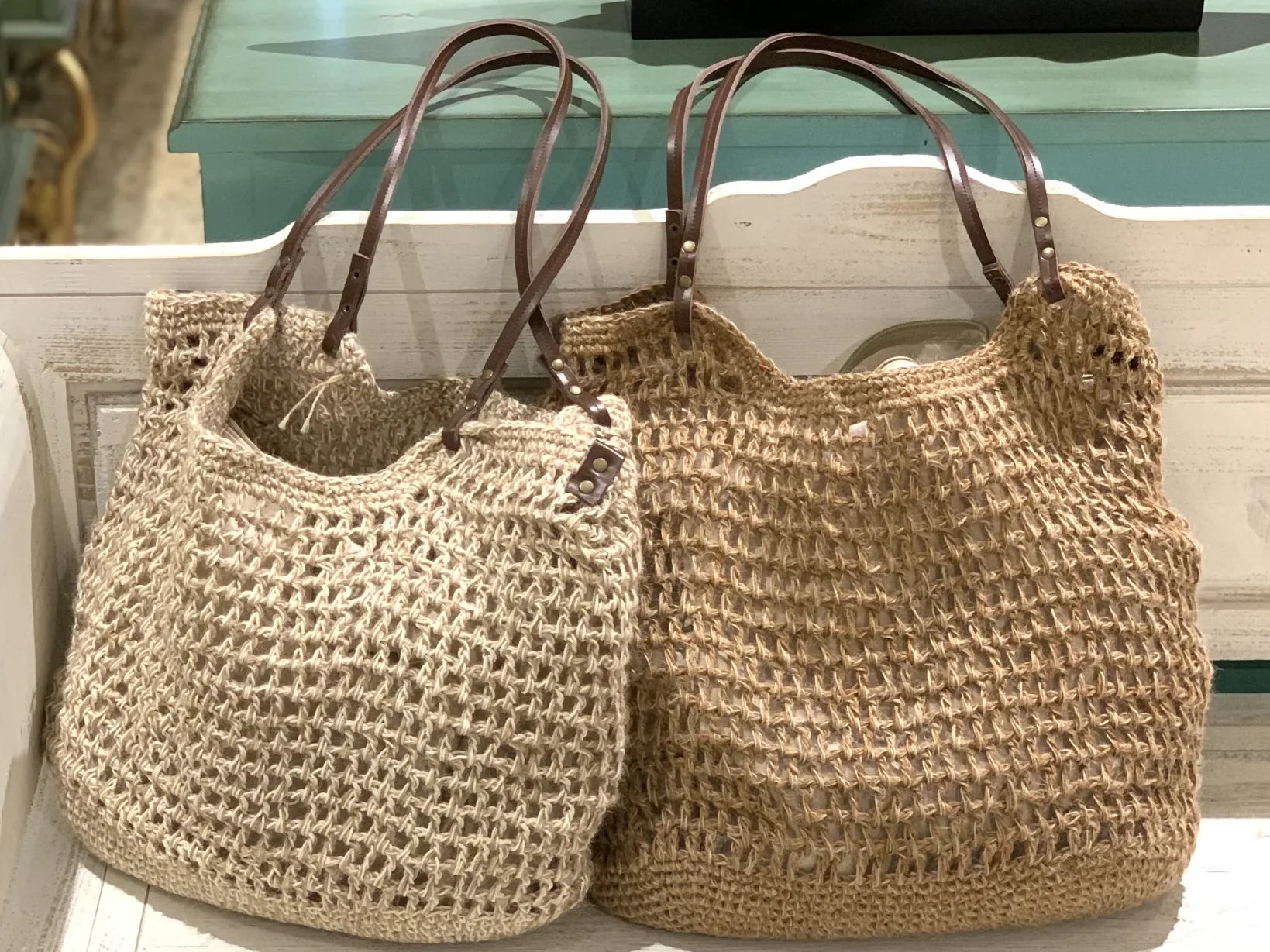Different Materials of Straw Bags: A Deep Dive

Different Materials of Straw Bags: A Deep Dive
Straw bags have taken the fashion world by storm, known for their lightweight feel, eco-friendly appeal, and intricate handwoven designs. However, not all "straw" bags are created equal. A closer look at the materials used in making these bags reveals significant differences in quality, durability, and aesthetics. In this blog, we'll explore the main materials used in straw-style bags and determine which one truly stands out as the best.
1. Natural Raffia from Madagascar
Authentic raffia comes from the raffia palm (Raphia farinifera), primarily found in Madagascar. The fibers are harvested, sun-dried, and then handwoven into beautiful, flexible, and highly durable raffia bags accessories. Key characteristics:
-
Durability: Natural raffia is resilient, making it perfect for bags that withstand daily wear and tear.
-
Flexibility: It has a supple nature that allows intricate weaving patterns.
-
Eco-friendliness: 100% biodegradable and sustainably harvested.
-
Aesthetic Appeal: Offers a luxurious, natural texture with a rich, earthy tone that ages beautifully over time.

2. Paper Straw
Paper straw bags are becoming increasingly common due to their affordability and ease of production. This material is made by twisting paper fibers into a straw-like texture.
-
Lightweight: Paper straw bags are incredibly light, making them easy to carry.
-
Less durable: Unlike natural raffia, paper straw is prone to tearing and deforming when exposed to moisture.
-
Not water-resistant: Can lose its shape or weaken when wet.
-
Eco-friendliness: While biodegradable, the processing and adhesives used may not always be as sustainable as natural raffia.
3. Cotton Straw
Cotton straw is another alternative used in straw-style bags, made from woven cotton fibers designed to mimic the look of raffia.
-
Soft texture: Provides a comfortable feel, making it ideal for casual or beachwear bags.
-
Less structure: Unlike natural raffia, cotton straw lacks the firmness needed for long-lasting bags.
-
Prone to fraying: The fiber is not as strong, leading to potential wear and tear over time.
-
Sustainability: Being a natural fiber, cotton straw bag is biodegradable but may require additional processing that impacts its eco-friendliness.

4. Synthetic Straw (Plastic-Based)
To cut costs, some manufacturers use synthetic straw made from plastic-based materials like polypropylene.
-
Highly durable: Resistant to moisture, mold, and breakage.
-
Not eco-friendly: Being plastic-based, it does not decompose easily, contributing to environmental waste.
-
Lacks authenticity: The texture feels artificial and does not have the breathable, organic appeal of real raffia.
-
Glossy finish: Unlike natural raffia, synthetic versions often have a shinier, less sophisticated look.
Conclusion: The Best Material for Straw Bags
After examining these different materials, it is clear that Natural Raffia from Madagascar stands out as the best choice. It combines durability, flexibility, sustainability, and a luxurious aesthetic that synthetic and paper-based alternatives simply cannot match. While paper straw and cotton straw provide affordable and lightweight options, they lack the longevity and premium feel of authentic raffia.
For those who value quality craftsmanship, sustainability, and timeless style, choosing a straw bag made from genuine Madagascar raffia is the best investment. Not only will you own a piece of artisanal beauty, but you’ll also be supporting ethical and sustainable practices that honor traditional craftsmanship.
Do you own a straw bag? Share your experiences and favorite styles in the comments below!



